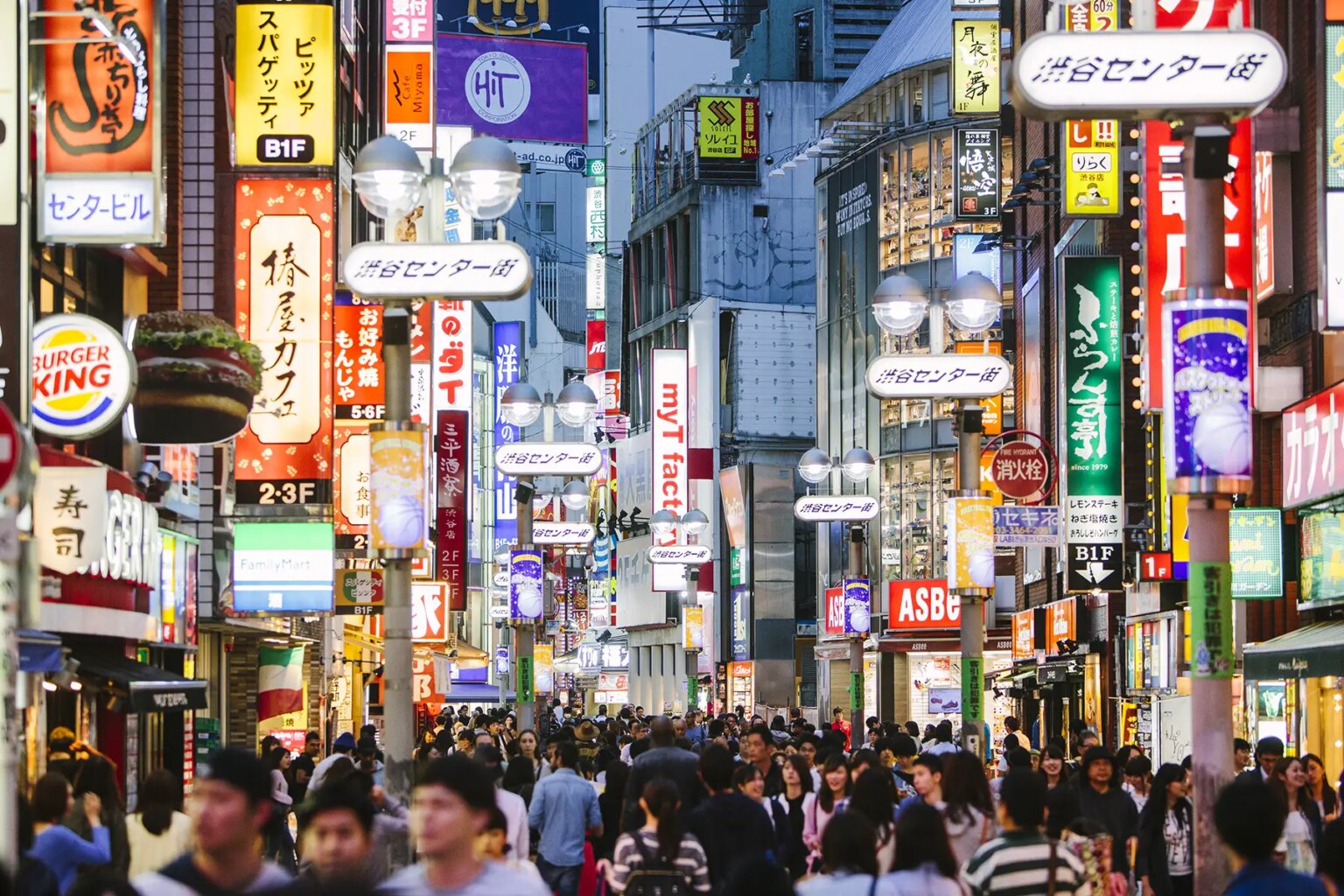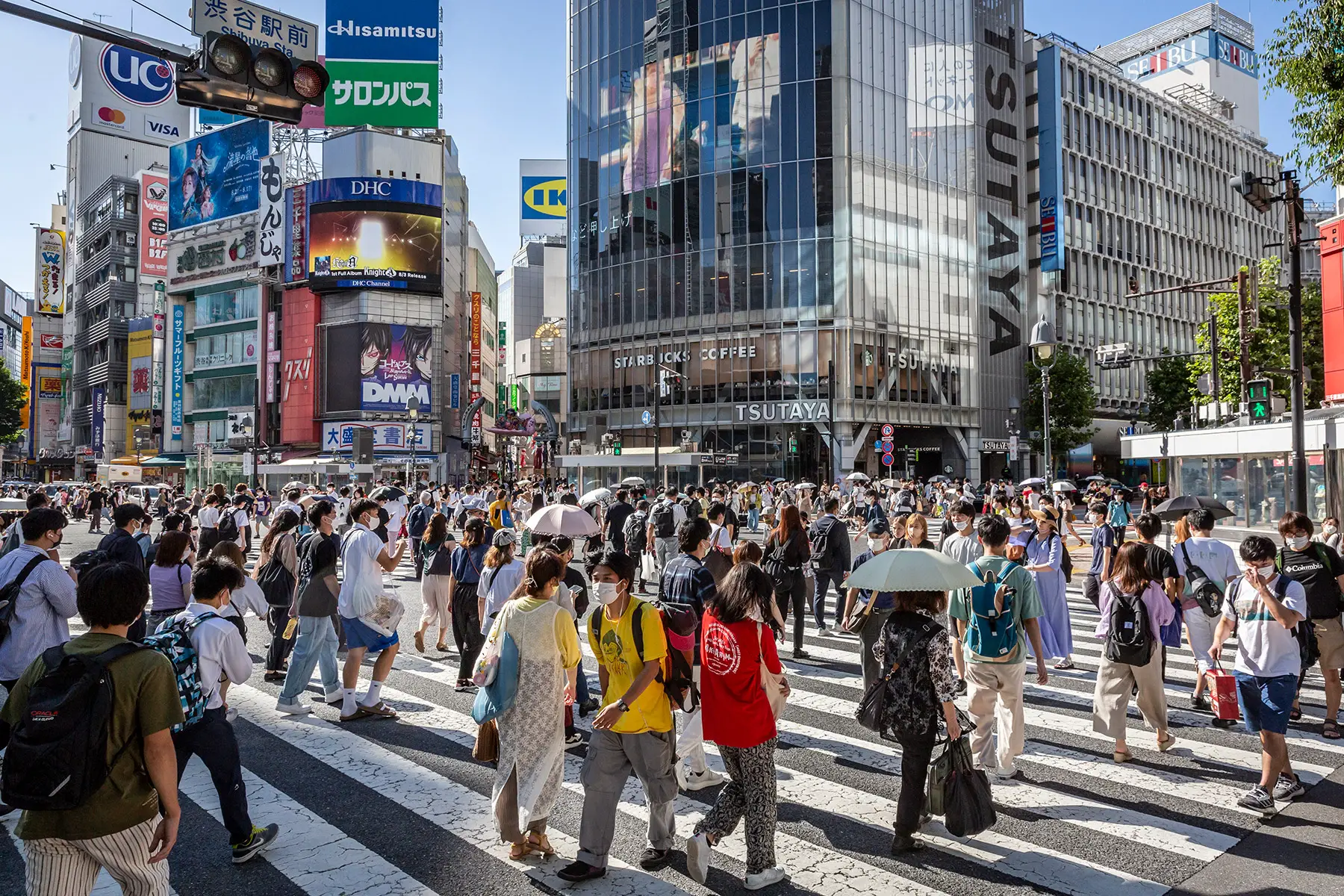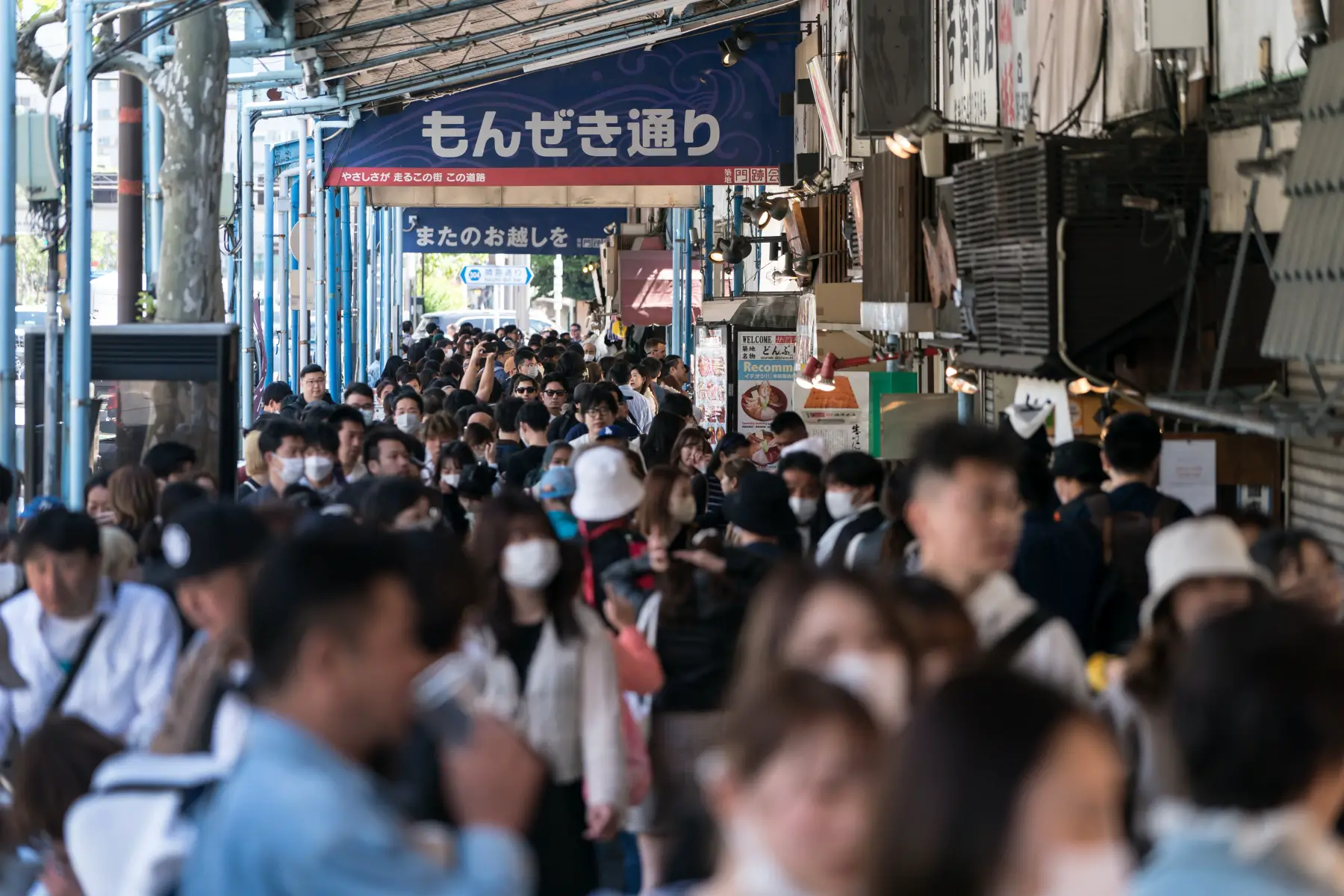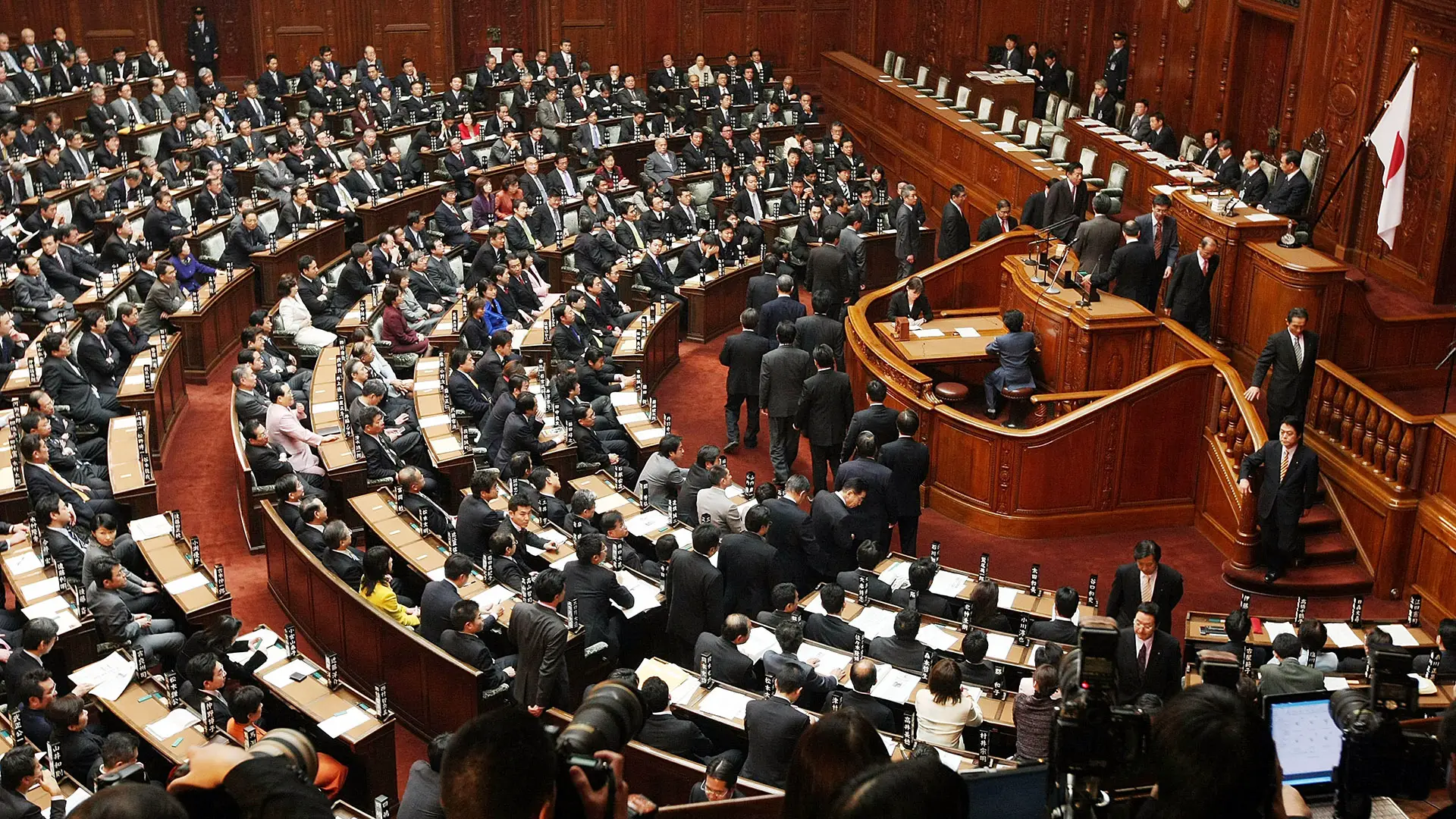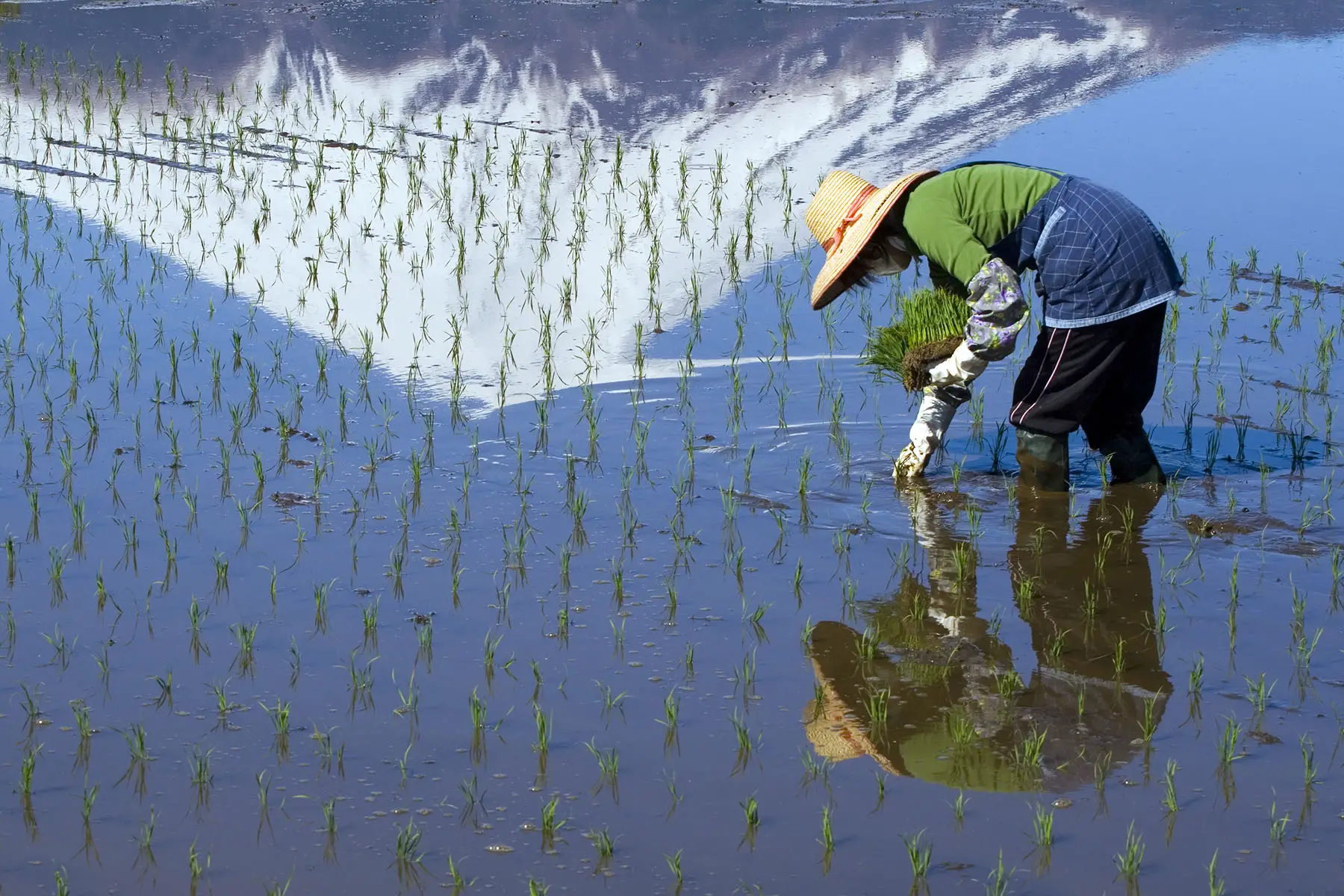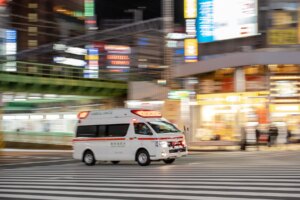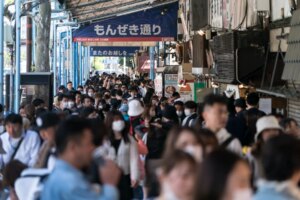Japan is more than a clichéd land of contrasts. Its diverse culture is one of the most unique worldwide, and the opportunities for expats to immerse themselves in it grow each year.
As the country recovers from the COVID-19 pandemic, the government hopes to attract more foreign workers and foster global-minded citizens to succeed in an increasingly borderless world.
For an introduction to various aspects of life in Japan, explore the following topics:
- A quick overview of Japan
- What quality of life can you expect in Japan?
- A quick overview of Japan’s geography
- Three of the major Japanese cities
- Fun facts and figures about Japan
- Some Japanese key historical dates
- Japanese economy and living standards
- How diverse is the Japanese society?
- Japanese lifestyle and culture
- What’s Japanese cuisine like?
- Politics, government, and administration
- Civil rights and freedoms in Japan
- Crime rates in Japan
- Healthcare and social security in Japan
- Japan’s education system
- Job opportunities in Japan
- Japan’s environment and climate
- What are some great places to visit in Japan?
- Public holidays and celebrations in Japan
- Popular myths about Japan
- Useful resources
The Relocator
Planning a new life in Japan? Give yourself some peace of mind with The Relocator. On their easy-to-use platform, you'll be able to compare your options quickly, getting quotes from some of the biggest names in global relocations. Move abroad confidently with The Relocator.
A quick overview of Japan
Japan’s population is around 125 million, but it’s largely homogenous. Only 3 million residents are foreign nationals, mainly representing neighboring Asian nations, such as:
- China (761,563)
- Vietnam (489,312)
- South Korea (411,312)

Internationals are drawn to Japan for its distinct culture and growing employment opportunities, especially as the government seeks to tackle population decline and a shrinking workforce.
Recently, this island nation also started accepting more refugees and asylum seekers.
A few interesting facts about Japan
During the Edo period (1603–1868), Japan was officially closed off to the outside world and controlled by the ruling Shogunate, a hereditary line of warlords. For 265 years, it existed in peace, allowing its arts and culture to flourish without outside interference. Because of this isolation, Japanese culture became one of the most instantly recognizable worldwide.
From cherry blossom groves to protected shrines and temples, hanging scroll paintings, and exquisite flower arrangements, life in Japan is filled with constant reminders of its storied past.
Its transition to a modern, technologically-driven society took a lot of work. Following the Second World War, Japan was in a state of despair. Two cities – Hiroshima and Nagasaki – had been devastated by atomic bombs, while air raids had reduced Tokyo to rubble.
Consequently, famine, disease, and inflation affected the whole nation.
What is Japan’s contribution to manufacturing and innovation?
Japan entered a miracle period, becoming one of the world’s richest countries by the 1980s thanks to structural and economic reforms, alongside startling levels of collective resilience.
The deeply rooted concept of making things (ものづくり, monozukuri) was pivotal.
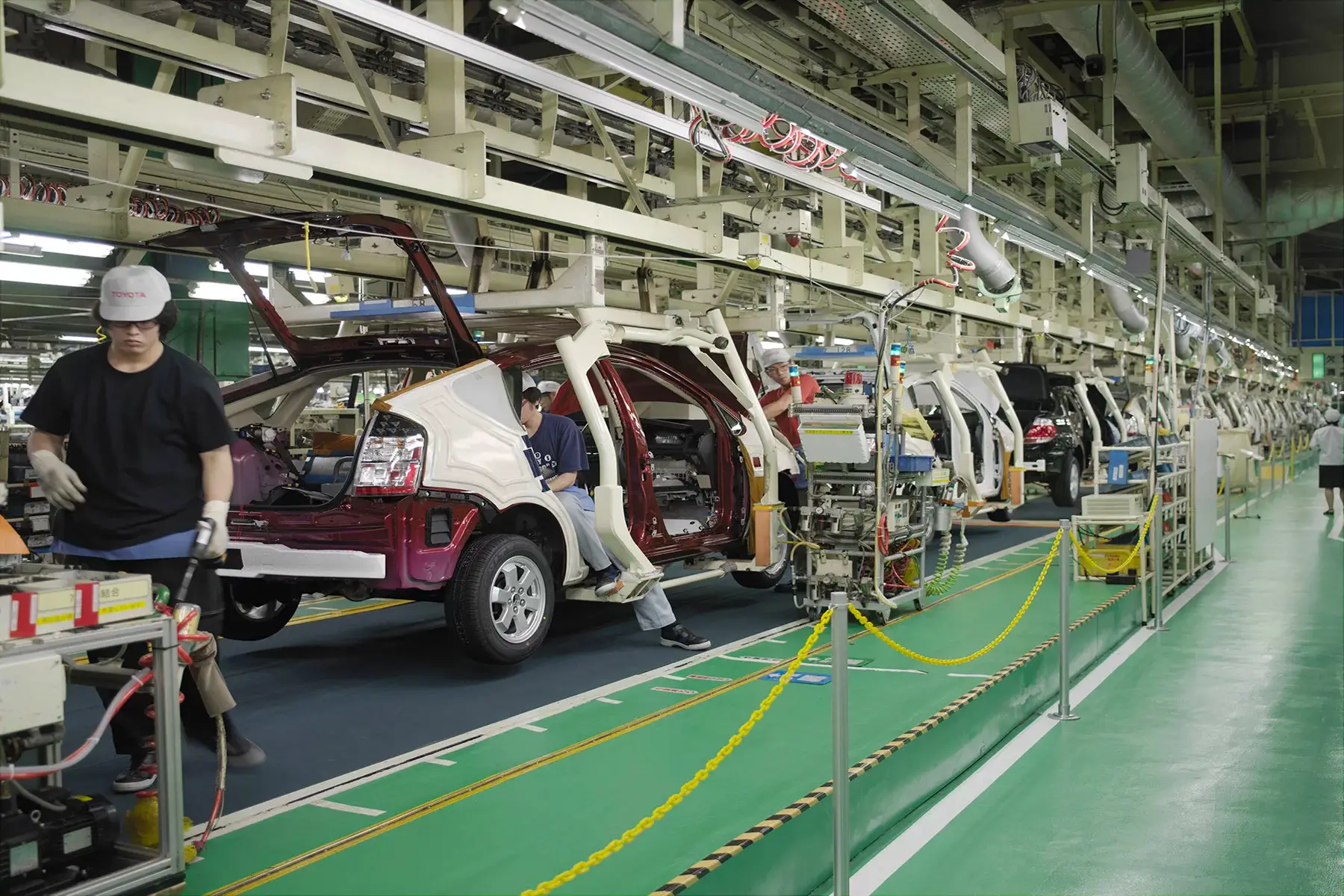
It was applied to manufacturing and technology during the recovery decades following the 1940s, making Japan a global innovation and industry center. It soon began exporting these products across the world, and many brands have since become household names, such as:
- Cars (Toyota and Honda)
- Motorbikes (Kawasaki and Yamaha)
- Televisions (Panasonic and Hitachi)
- Video game consoles (Sony and Nintendo)
- Cameras (Fujifilm and Canon)
- Laptops (Toshiba and NEC)
Technology is now a pervasive factor in modern Japanese life. This is most apparent in major cities like Tokyo and Osaka, where super-clean, high-rise, neon-lit urban aesthetics evoke ideas of futurism. This forward-thinking mindset is offset by a connection to ancient traditions, making Japan a country unlike any other.
What quality of life can you expect in Japan?
Japan is a substantially middle-class society, with most residents enjoying a relatively high quality of life.
According to the OECD Better Life Index (2021):
- 77% of working-age residents in Japan are employed (the OECD average is 66%)
- The average life expectancy is 84, one of the highest in the world
- It is one of the world’s safest countries (e.g., a low homicide rate of 0.2 per 100,000 people and scarcely any robbery and violent crimes)

However, Japan underperforms concerning income, civic engagement, life satisfaction, and work-life balance, falling behind countries such as Italy, Germany, and the United Kingdom (UK).
Long hours, age-based hierarchies, and unquestioning service to the company dominate domestic corporate culture. As a result, Tokyo was ranked the 6th most overworked city globally in 2022.
A quick overview of Japan’s geography
Japan is an archipelago (island group) off the east coast of mainland Asia. It straddles the Ring of Fire, a belt of tectonic plates in the Pacific Ocean, leaving it prone to volcanic activity and earthquakes. But this has also created some of its most magnificent natural features, including:
- Japan has a surface area of 145,937 square miles (i.e., 377,975 square kilometers)
- The combined coastline is 18,486 miles long (i.e., 29,751 kilometers), the sixth-longest worldwide
- As an island nation, it has no land borders, though it shares maritime borders with Taiwan, China, South Korea, North Korea, the Philippines, and Russia
- Mountains cover 80% of Japan’s landmass, and forests, 67%. Notable features include the 12,388-ft (3,776m) volcano Mt Fuji and the Aso Caldera, one of the world’s largest with a circumference of 75 miles (120km).
Japan’s major islands
According to the Geospatial Information Authority (GIA) (国土地理院, Kokudo Chiri In), Japan’s archipelago includes 14,125 islands, meaning its newest research (2023) showed around 7,000 more land masses than previously believed.
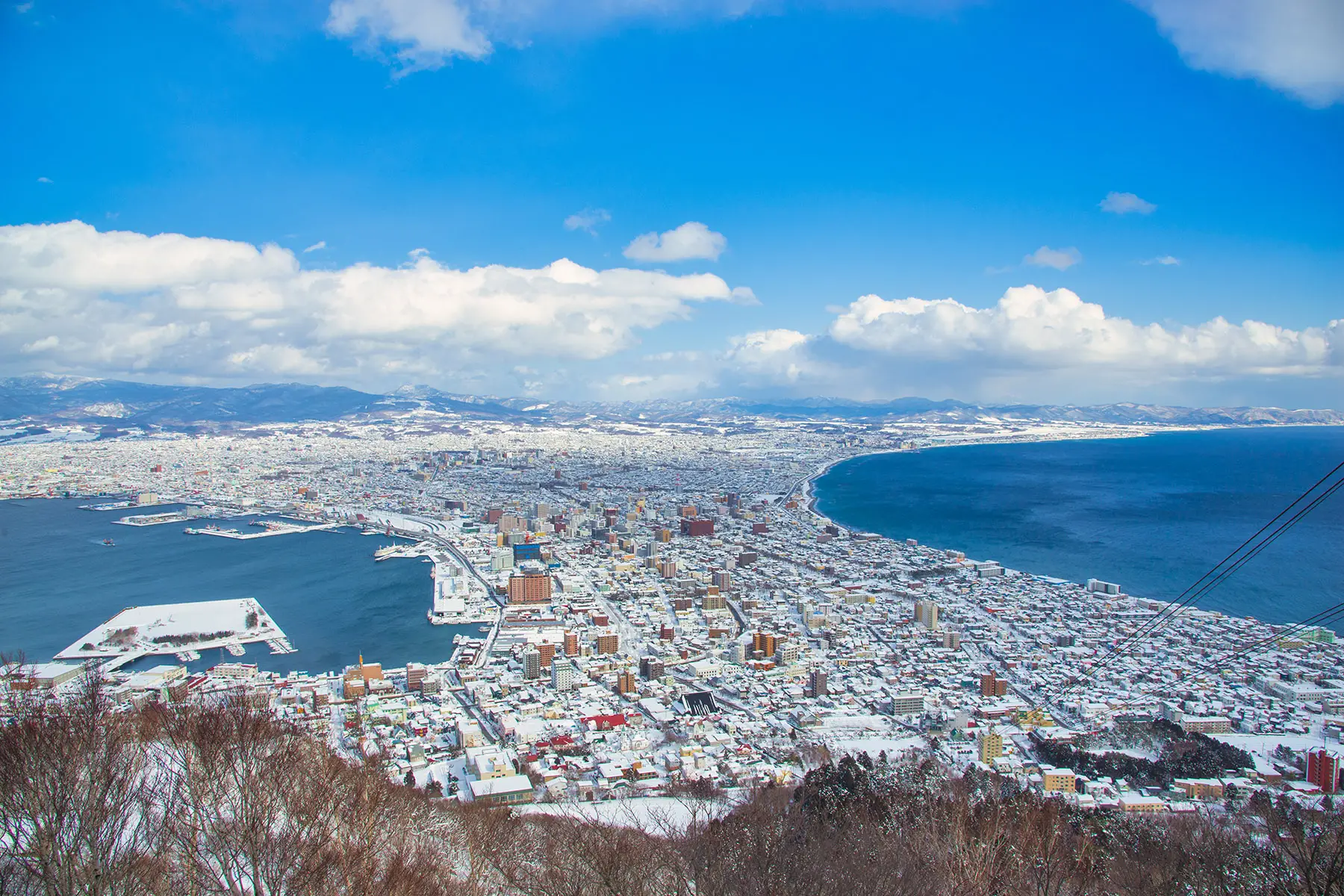
The country defines five as mainland islands and the rest as remote (離島, rito) or uninhabited. These five include:
- Hokkaido: In the north, the second largest with a population of five million. It is covered in snow for up to five months a year and is popular for winter activities like skiing and snowboarding.
- Honshu: The largest and most populated island; home to major cities like Tokyo, Osaka, Kyoto, Nagoya, and Hiroshima. It is Japan’s primary center of governance and commerce, connecting its most innovative and dynamic cities.
- Shikoku: The smallest of the major islands and a place of deep spirituality. The Buddhist Henro (四国遍路, Shikoku Henro) pilgrimage, connecting 88 temples, encircles the island. Pilgrims come from far and wide to walk the trail as a purification rite.
- Kyushu: In the south is the third largest island of Japan. It’s known for its laid-back atmosphere, subtropical climate, and uniquely cosmopolitan history. Over the past several centuries, Korean potters, Portuguese Jesuits, Dutch traders, and the former Ryukyu Kingdom (modern-day Okinawa) have influenced its culture.
- Okinawa: The least inhabited of the main islands, with a humid subtropical climate. It still hosts US military personnel as it was a strategic location since the Second World War.
Other important island groups further adrift in the Pacific but also within Japan’s national territory include Yakushima, Ogasawara, and Satsunan.
Three of the major Japanese cities
Tokyo
Japanese culture celebrates the beauty of impermanence (i.e., everything is temporary), known as mono no aware (もののあはれ), and Tokyo is living proof.
From the glittering skylines of Shibuya and Shinjuku to the hipster subcultures of the Shimokitazawa and Koenji neighborhoods, the city is in constant flux, making it one of the most attractive destinations for relocating expats and culture-hungry travelers.
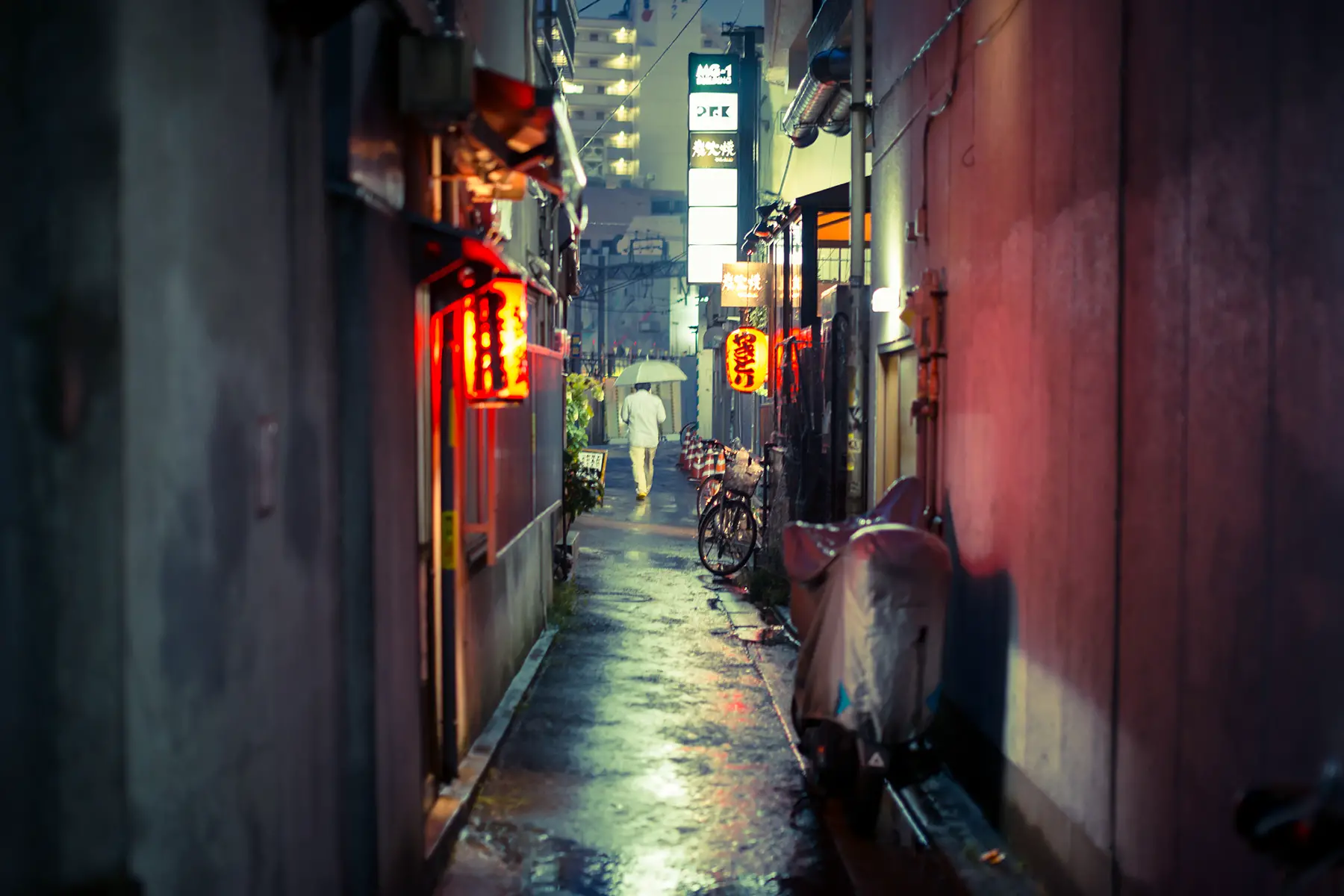
Tokyo has been the capital of Japan since 1868. The world’s most populous city – around 38 million – matches vibrancy and opportunity with incredible levels of safety.
The Economist Safe Cities Index (2021) ranks it fifth overall, marginally behind Copenhagen, Toronto, Singapore, and Sydney, based on the following security elements:
- Digital
- Health
- Infrastructure
- Personal
- Environmental
It also retained its place as one of the world’s greatest culinary hotspots, with numerous Michelin-star restaurants on offer.
Osaka
Osaka, connected to Tokyo via bullet train, is an easy-going alternative to the more buttoned-up capital. Known for its edgy dialect and straight-talking locals, it is also Japan’s soul food capital offering dishes like:
- Okonomiyaki (a savory pancake with fillings)
- Takoyaki (doughy octopus balls)
- Kushikatsu (deep-fried meat and vegetable skewers)
To try these, you can visit the many gastropubs (izakaya) in the lantern-lit alleyways of Osaka.
Kyoto
Kyoto embodies Japan’s commitment to artistic refinement and was the national capital from 794 to 1867.
Kyoto is home to the nation’s cultural arts, such as:
- The tea ceremony (茶道, sado)
- Geishas (芸者)
- Noh (能), and kabuki theater (歌舞伎)
- Calligraphy (書道, shodo)
- Pottery (陶芸, togei)
- Woodblock prints (浮世絵 , Ukiyo-e)

Kyoto is a walkable city with riverside restaurants and neighborhoods where the architecture has scarcely changed since the Edo period. It also has 17 UNESCO World Heritage Sites, including:
- Kinkaku-ji (the Golden Pavilion)
- Kiyomizu-dera Temple
- Nijo-jo Castle
- Enryaku-ji Temple on Mt Hiei-zan
Fun facts and figures about Japan
- Japan is home to the oldest company in the world – Kongo Gumi (金剛組) – which has been constructing shrines and temples since the sixth century
- Though most people associate Japan with cherry blossoms, the chrysanthemum is the national flower, giving its name to the imperial throne
- There are around five million vending machines in Japan, one for every 31 people, selling everything from drinks and snacks to toys and umbrellas (unfortunately contributing to plastic pollution)
- Japan hosts the largest fish market in the world, Toyosu Market (豊洲市場, Toyosu Shijo) in Tokyo, with more than 600 merchants and 1.7 million square feet (517,000m) of floor space
- The nation has around 90,000 centenarians, people over 100 years old, many of whom live in Okinawa
- The Tale of Genji (源氏物語, Genji Monogatari), published in the 11th century by mysterious Japanese courtier Murasaki Shikibu, is widely considered the world’s oldest novel
Some Japanese key historical dates
- 660 BCE: The mythological Emperor Jimmu established Japan
- 710 CE: Nara becomes the imperial capital and Buddhism the state religion due to influences from China
- 794 CE–1185: The imperial court chooses Kyoto (then known as Heian-kyo – 平安京) as its new capital, initiating the Heian period (平安時代, Heian jidai). Buddhism flourishes in sync with traditional Shintō beliefs, while this period also marks the birth of the samurai (侍).
- 1467–1615: The Sengoku era (戦国時代, Sengoku jidai) gets underway, with bloodthirsty warlords fighting over land for the next 150 years
- 1603–1867: The Edo or Tokugawa period (江戸時代, Edo jidai) begins with peace settling across the country under Shogun Tokugawa Ieyasu, allowing cultural arts to flourish
- 1853: Commodore Matthew C. Perry of the United States Navy arrives in Japan and successfully negotiates with the Shogun to open his borders for the first time in more than two centuries
- 1868–1889: During this period, known as the Meiji Restoration era, the emperor is reinstated as ruler, turning Japan into a nationalistic military state
- 1941: Japan attacks Pearl Harbor, provoking the United States (US) into war in the Pacific region
- 1945: Atomic bombs destroy Hiroshima and Nagasaki. Emperor Hirohito subsequently issued Japan’s surrender (World War II)
Japanese economy and living standards
Although many Japanese cities offer excellent public transport, and quality healthcare and education, you can also expect a high cost of living.
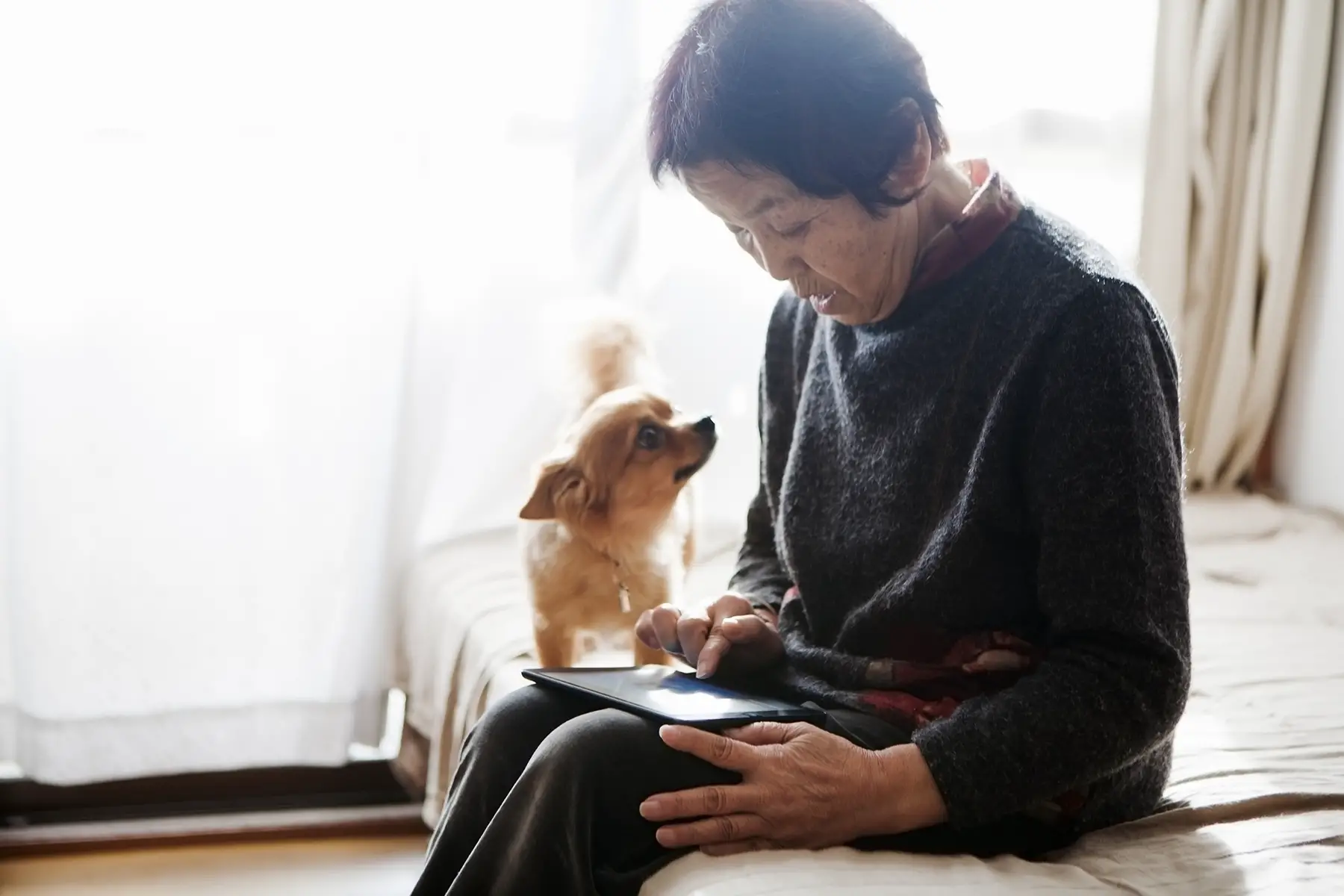
Research suggests Tokyo is in the top 10 most expensive cities for international employees, partly because they pay a premium for real estate. For example, the average rental price for a small studio apartment in central Tokyo is ¥95,000 per month, which increases significantly with more square meters.
Unfortunately, the average wage in Japan has stagnated since the late 1990s and is currently around ¥4.61 million (US$32,600) per year, significantly below the OECD total of US$51,000. As such, people’s salaries do not match the high rental prices.
Like many other countries, Japan’s economy faces several challenges, including consumer price inflation, rising import costs, and a depreciating yen as a fallout from the COVID-19 pandemic.
Inflation hit a record 41-year high of 4% in December 2022, though it remained much lower than in the US and Europe. The yen has lost significant value against the dollar, pound, and euro post-Covid, making imported goods expensive. However, some newcomers and visitors benefit from strong exchange rates upon their arrival in the country.
Former Prime Minister Kishida Fumio (岸田文雄首相, Kishida Fumio Shusho) introduced his new form of capitalism (新しい資本主義実現会議, atarashii shihon-shugi jitsugen kaigi) to stabilize the economy, but received mixed results.
How diverse is the Japanese society?
It’s the most ethnically and racially homogenous Global North country worldwide. Of its 125 million residents, around 98% are Japanese, according to the latest census.
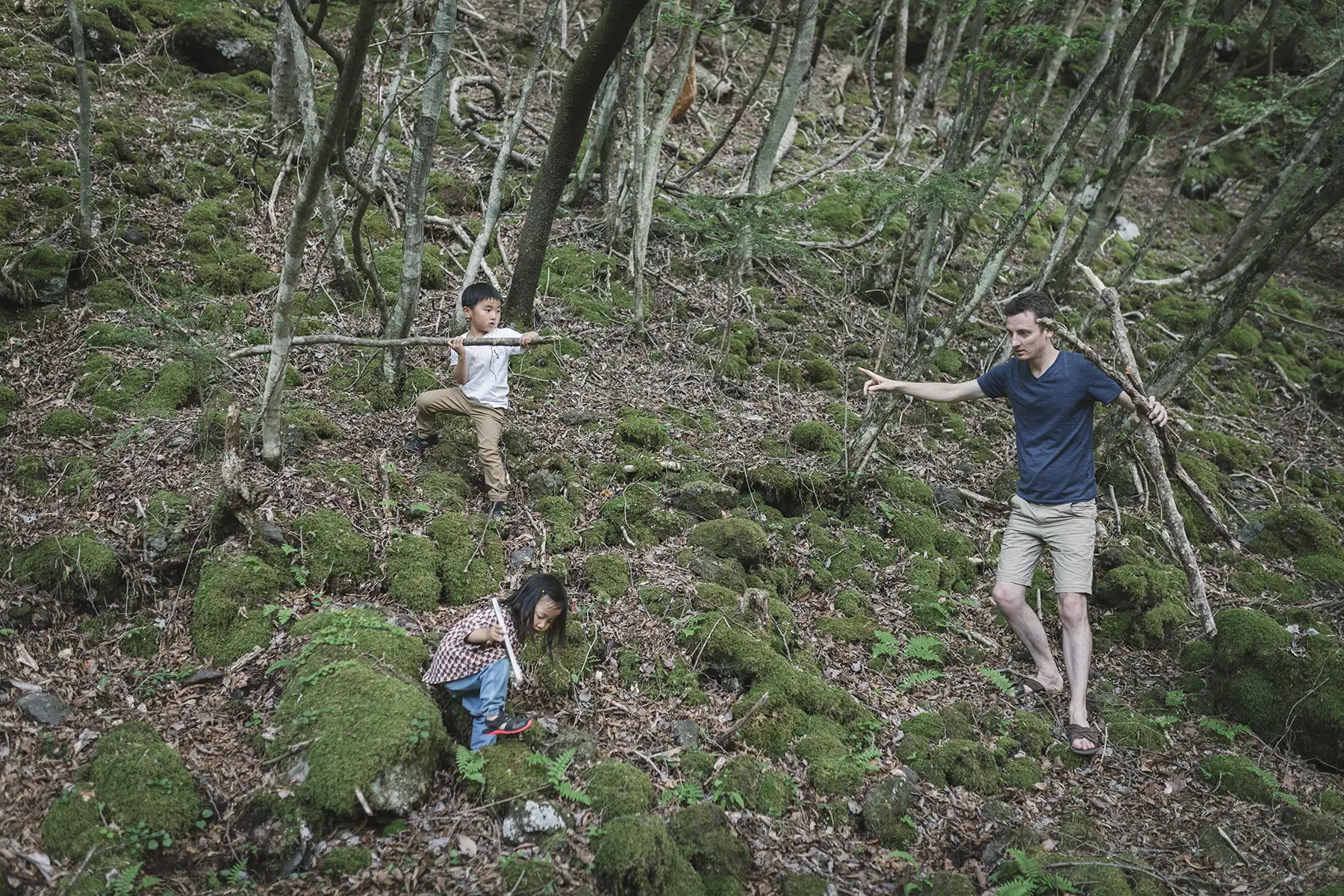
However, this census is based on citizenship rather than ethnicity, so it doesn’t factor in the growing number of children born to parents of mixed Japanese and foreign (primarily Asian) heritage. Some parts of society may not consider them Japanese but refer to them as hafu (ハーフ), which means “half.”
Japan also has the second oldest population on earth, with 36% of residents over 65.
The major religions in Japan
According to the Statistics Bureau of Japan (e-Stat) (統計局, Tokei Kyoku), the largest part of the population practices Shintō (神道) or Buddhism (仏教, bukkyo), with only a small percentage identifying as Christian or following other religions.
However, many Japanese people do not hold strong religious identities, especially as Shintō and Buddhism are ways of life that can be practiced harmoniously with other belief systems. This is probably what the popular saying, “born Shintō, live nonreligiously, wed Christian, and die Buddhist,” means.
As such, many people view religion as useful in times of need, like praying at a shrine for good health or exam results or for dictating the traditions at cultural ceremonies.
Japanese lifestyle and culture
While few Japanese are religiously devout, social traditions and etiquette still play an important role.
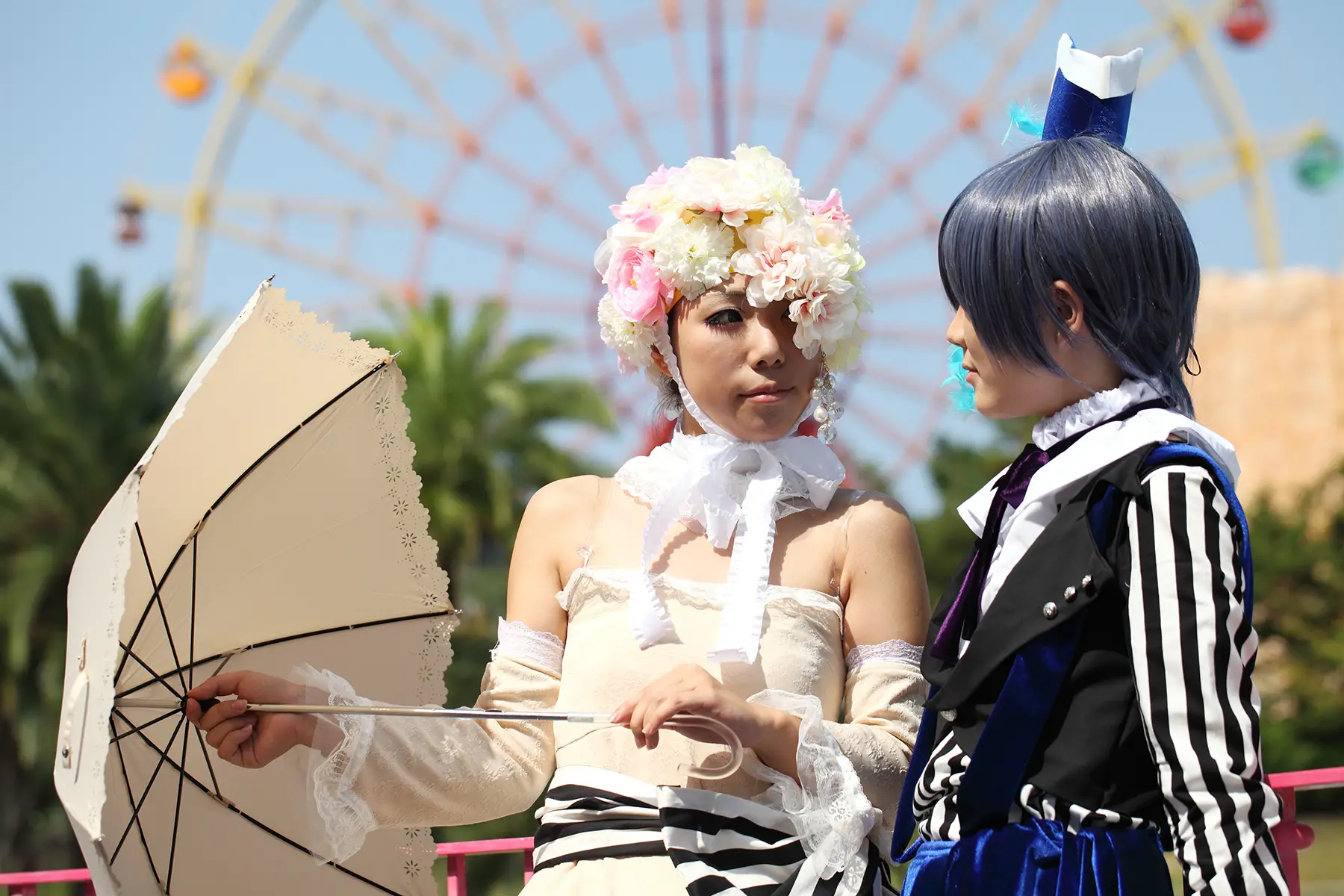
Some things to be aware of to help your cultural integration include:
- Always address your elders respectfully, with appropriate honorifics (e.g., Yuki, becomes Yuki-san)
- Bowing is more common than handshakes
- Always take your shoes off when entering someone’s home
- Never leave your chopsticks upright in a bowl of rice; this symbolizes death
- Japanese people may value their privacy even more than many other cultures, so bear this in mind when asking personal questions
- One of the major stereotypes is that Japanese people are extremely polite. This is largely true, as the culture focuses on maintaining wa (和) (i.e., social harmony). However, many also understand that outsiders will take time to assimilate into their culture and will tolerate any faux pas.

Local expert
Hidemi Linuma
Insider tip
‘San’ corresponds to ‘Mr’ or ‘Ms’ in English, but is gender neutral. However, it is impolite to omit ‘san’ when you address someone older than yourself.
Furthermore, Japan has a hobbyist culture, often referred to as ikigai (生きがい), an untranslatable term that’s similar to a raison d’etre, or reason for being, meaning they dedicate a considerable amount of time to this outside work hours.
The hobby could be something historical, like tea ceremonies or karate, or more modern, like anime cosplay or collecting jazz records.
Famous Japanese artists, filmmakers, and authors
Japan has had a significant artistic output, in literature, painting, music, cinema, and more. Some of the most pioneering artists whose work is still revered include:
- Akira Kurosawa: The king of the Golden Age of Japanese cinema, he directed many award-winning films, including Rashomon, Seven Samurai and Ikiru
- Haruki Murakami: Japan’s most celebrated modern author, with his surrealist novels translated into more than 50 languages
- Hayao Miyazaki: Renowned animator, filmmaker, and manga artist from Studio Ghibli
- Heian Court Ladies: A series of aristocratic women writing in secret between the 9th and 12th centuries, they created works like The Tale of Genji (Murasaki Shikibu) and The Pillow Book (Sei Shonagon)
- Katsushika Hokusai: A turn-of-the-19th-century ukiyo-e master known for his Thirty-six Views of Mount Fuji and Great Wave off Kanagawa woodblock prints
- Koizumi Yakumo: Also known by his birthname, Lafcadio Hearn, the Greek-Irish immigrant translated spooky Japanese folktales at the turn of the 20th century
- Matsuo Basho: The father of haiku poetry and author of the 17th-century travelogue Oku no Hosomichi (The Narrow Road to the Deep North)
- Tadao Ando: A world-renowned architect and concrete specialist who’s designed buildings and museums all across Japan
- Toshiko Akiyoshi: A leading figure for women in jazz and one of the most important Asian musicians of the 20th century
- Yayoi Kusama: A trailblazing pop artist, now in her 90s, with global exhibitions of her psychedelic works
- Yasunari Kawabata: The first Japanese author to win the Nobel Prize in Literature
What sports are popular in Japan?
Popular sports in Japan are diverse and include:
- Martial arts
- Baseball
- Football, better known as soccer
- Tennis
- Golf
- Boxing
- Japanese wrestling
- Rugby
- Basketball

Japan has created many types of martial arts, including the national sport, sumo, karate, aikido, kendo, kyudo, ju-jutsu, and judo. Notably, it has won 48 Olympic golds in judo, more than any other country.
The nation also excels in other contact sports, such as boxing and puroresu, which combine sumo and free wrestling. Sena Irie won gold in women’s featherweight boxing at the 2020 Tokyo Olympics, and Naoya Inoue holds eight world titles across three weight divisions.
Baseball is often called the unofficial national sport of Japan. However, Japanese people also love to play and support football (i.e., soccer), and many closely follow the nationwide major league.
With more than 2500 golf courses across the country, many enjoy some time on the green, and the sport has delivered top athletes like Hideki Matsuyama (winner – Augusta Masters, 2021) and Hinako Shibuno (winner – Women’s British Open, 2019).
Rugby has existed in Japan since the 1800s but has grown in popularity since it hosted the 2019 World Cup, with its national team enjoying a global following. Basketball, especially popular at the high school level, was epitomized by the successful 1990s manga series Slam Dunk. And, at the 2021 Olympics, the women’s team took home silver.
Lastly, tennis is getting more traction and has already delivered star players like Naomi Osaka. She is the first Asian woman to hold top singles rankings because of her four Grand Slam titles and two Australian and two American Open championships.
What’s Japanese cuisine like?
Food is deeply rooted in Japanese culture: in 2013, the national cuisine was designated an intangible element of Japan’s cultural heritage. Cooking expert Shizuo Tsuji (1933–1993) once wrote, “Japanese cuisine is deceptively simple; its ingredients are but two: a rather delicate stock (出汁, dashi) made from konbu (giant kelp) and flakes of dried bonito, and shoyu, Japanese soy sauce.”
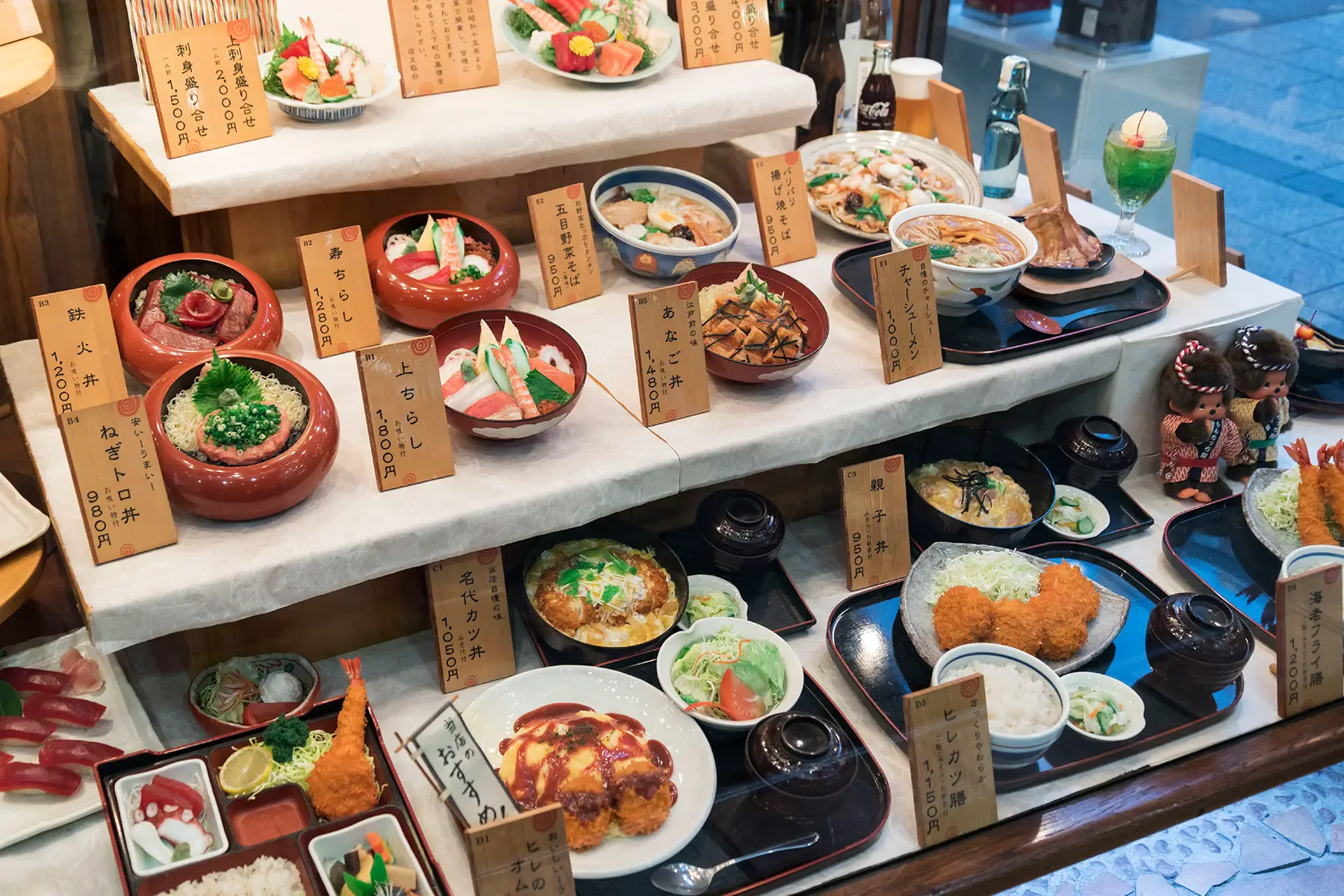
Japan celebrates this simplicity in its cuisine, focusing on its produce’s texture and natural flavors rather than emphasizing salt and spice.
The Michelin guide verifies Japan’s culinary credentials. In 2023, three of the cities with the most Michelin stars worldwide are in Japan:
- Tokyo (1st with 263 stars across 200 restaurants)
- Kyoto (3rd with 192 stars across 108 restaurants)
- Osaka (4th with 192 stars across 98 restaurants)
Typical dining styles in Japan
- Izakaya (居酒屋): These gastropubs serve sharing plates and alcohol, often with all-you-can-eat-and-drink options
- Sushi bars (寿司屋, sushi ya): Restaurants with counter seating where you order directly from the chefs
- Ramen shops (ラーメン屋, ramen ya): Small restaurants serving signature bowls of ramen, usually with a vending machine for placing orders
- Yakiniku (焼肉屋, yakiniku ya): Meaning “grilled meat,” at these restaurants you cook beef and other meats over a grill at your table
- Yakitori (焼き鳥屋, yakitori ya): Restaurants specializing in grilled chicken skewers
- Okonomiyaki (お好み焼き屋, okonomiyaki ya): Eateries where diners cook Osaka pancakes on hotplates built into the tabletop
- Kaiseki ryori (懐石料理) Multicourse seasonal cuisine often served in high-end restaurants and ryokan (旅館)(traditional inns)
- Shojin ryori (精進料理): Vegan cuisine eaten by Zen monks, often served in temples
Politics, government, and administration
Japan has a constitutional monarchy, with the emperor (天皇, Tenno) as the symbolic head of state. The National Diet (国会, Kokkai) in Tokyo is the center of governance, composed of the House of Representatives (衆議院, Shugi In) and the House of Councilors (参議院, Sangi In).

A democratic vote decides the party in power, but this has seldom led to change. For instance, the center-right Liberal Democratic Party (LDP) has been in power since 1955, except for two short stints between 1993 and 1994 and 2009 and 2012.
This is a primary cause for low voter turnouts, even though all Japanese nationals aged 18 and over have the right to vote. Japan’s last election, won by Fumio Kishida in 2021, had the third-lowest turnout in the post-war era.
Japan maintains good international relations with close ties to the US, which still has more than 50,000 soldiers stationed in the country. It’s also a major non-NATO ally and member of the Quad, a peace-based cooperative combining Japan, Australia, India, and the US.
In addition, article 9 of Japan’s constitution (1947) forbids it from entering war, which has become contentious. Many LDP politicians want to revise Article 9 under growing threats from China and North Korea and longstanding tensions with South Korea.
Civil rights and freedoms in Japan
Japan ranks well in the Human Freedom Index. In 2022, it came 16th out of 165 countries based on positive factors, such as:
- Safety and security
- Secularism
- Freedom of assembly
- Economic independence
- Freedom to explore same-sex relationships, though not yet marriage

Press freedoms are, however, lagging in Japan. The Reporters Without Borders World Press Freedoms Index puts Japan in 68th place out of 180 (2023). Negative factors include:
- Government influence over and censorship of the major news conglomerates
- Press clubs often require a bias from journalists to report positively on the government before approving their membership
- The State Secrets Protection Law allows the state to withhold information if deemed a matter of national security
- Following the Fukushima nuclear disaster of 2011, the government can legally prevent journalists from entering areas deemed of “national security interest”
Marginalized communities are also still fighting on the fringes of society. And same-sex marriage remains illegal, with many politicians in the ruling LDP opposing it.
Crime rates in Japan
Crime levels are admirably low in Japan. It ranked 10th out of 163 surveyed countries in The Global Peace Index (2022), with high levels of personal safety and few violent crimes or internal conflicts.
White-collar crimes persist, however, and are often linked to Japan’s largest organized crime syndicate, the Yakuza (ヤクザ). In the 1960s, there were as many as 184,000 Yakuza foot soldiers across the country, but this number had dwindled to 24,100 by the end of 2021. Still, Japanese police have received criticism for disregarding crimes involving the Yakuza because of their close ties.
Despite Japan’s 1,000 police stations and 6,000 koban (police kiosks), officers spend most of their time handing out anti-crime fliers or dealing with lost and found items, which ill-prepares them to deal with major crimes. That said, the police in Japan have extraordinary powers to interrogate people once arrested, contributing to the country’s 99% conviction rate.
Healthcare and social security in Japan
According to the 2023 World Happiness Report (WHR), Japan is the 47th happiest country in the world, based on the overall life satisfaction experienced by its society. The survey measures variables like:
- GDP per capita
- Social support
- Healthy life expectancy at birth
- Freedom to make life choices
- Generosity
- Perceptions of corruption
Its middling rank is attributed to citizens’ lack of meaningful social connections and work-life imbalances. Many in the Japanese community have also experienced mental health issues due to social isolation since the COVID-19 pandemic.
Consequently, the government appointed a Minister of Loneliness (孤独・孤立対策担当大臣, Kodoku-koritsu taisaku tanto Daijin) in 2021 to introduce mental health and wellbeing measures to combat this.
Fortunately, Japan has solid healthcare and social security systems: the government covers 70% of public healthcare costs, with patients paying the remaining 30%. Contributions work on a sliding scale to make it fairer for people earning a lower income.
There’s also a mandatory public pension contribution of ¥16,590 per month. Each pensioner receives a percentage upon retirement. But as the population grays, there are concerns over whether the pension system can sustain itself.
Japan’s education system
Basic education is compulsory from ages 6 to 15, and parents can choose between public, private, and international schools.
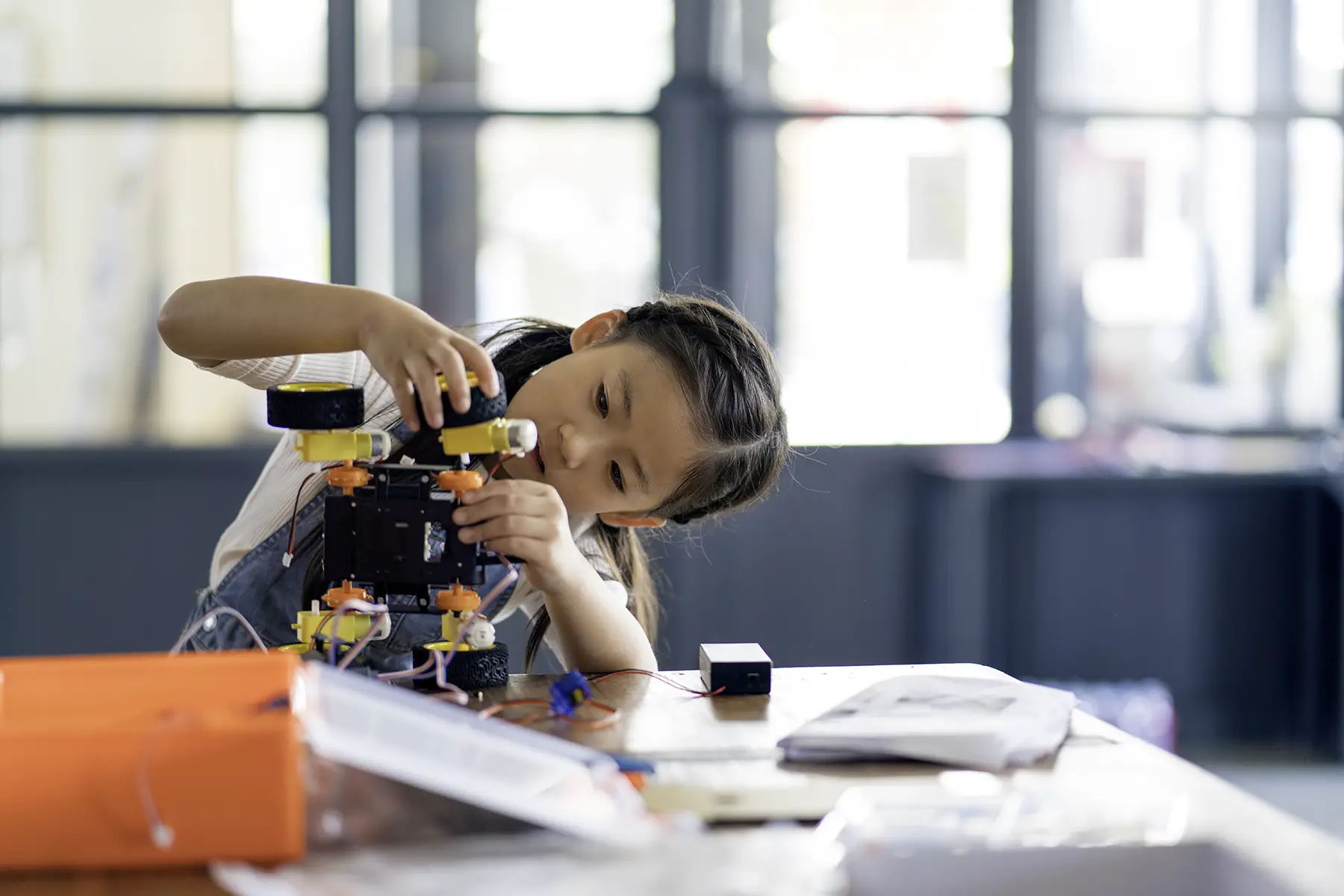
The state school system has strong education standards, with literacy and numeracy rates among the highest in the OECD. However, if your child does not speak Japanese, they may struggle with the language barrier.
Japan has significantly closed the gender gap concerning access to educational opportunities allowing many students to also study further, with at least half of 25- to 35-year-olds completing tertiary education.
As a non-Japanese speaker, your choices may be limited, but three Japanese universities rank in Asia’s top 20:
- The University of Tokyo in 11th place
- Kyoto University in 16th place
- Tokyo Institute of Technology in 20th place
Other high-ranking universities include Osaka University, Tohoku University, and Nagoya University.
Job opportunities in Japan
Manufacturing, construction, and agriculture are among Japan’s major industries that often hire foreign workers – with specific expertise – if they can’t fill positions with Japanese staff.
Recruitment, tech, and tourism are other employment fields where speaking Japanese isn’t always required.

Teaching English is one of the most common jobs for expats, with public education institutions and English conversation schools (英会話, eikaiwa) constantly looking for new staff.
Self-employment is possible for foreigners, although you will need the correct visa. For example, the Startup Visa is a good option for new business owners, while the Artist’s Visa caters to writers, photographers, painters, actors, and various other freelance professionals.
Many urban employment opportunities are categorized as sarariman jobs, defined by long office hours, working overtime, and devotion to the company. These opportunities are usually limited if job applicants can’t speak at least business-level Japanese.
Japan avoided lockdowns during the pandemic, meaning its unemployment rate has remained low – around 2.6% (2022), under the OECD average of 4.9%. The numbers don’t tell the full story, however, as just over 20 million workforce members are classed as “non-regular” employees, referring to:
- Contract workers
- Agency or dispatch workers
- Part-time staff
Japan’s environment and climate
Hokkaido in the north is covered in snow for five months a year, whereas in subtropical islands like Okinawa and Ogasawara, the average temperature is higher than 20°C. Central Japanese cities like Tokyo, Kyoto, and Osaka have cold winters, humid summers, and month-long rainy seasons at the end of spring.
This has created great biodiversity in Japan, which has more than 90,000 known species of plants and animals. Eastern Honshu is now largely urban, with a belt of cities and towns known as the Golden Route (ゴールデンルート, goruden ruto), running from Tokyo down through Nagoya to the Kyoto-Osaka-Kobe conurbation.
But elsewhere, you’ll find vast national parks – 34 in total – home to bears, monkeys, migratory birds, wildflowers, and countless reptile species (60% of which are endemic).
The surrounding seas are full of life, with:
- 50 of the world’s 127 marine mammals
- 122 of the world’s 300 seabirds
- 3,700 fish species
Unfortunately, this doesn’t mean environmental concerns are always at the forefront. Japan has lost 4% of its forest cover in the last decade. It has also been slow to shift to a renewable energy economy as it remains the world’s largest fossil fuel financer, spending $US10.6 billion annually.
Natural disasters and extreme weather events in Japan
Japan is prone to natural disasters, such as typhoons and earthquakes.
Typhoons occur on average 16 times a year, usually in late summer and autumn, and can be dangerous, like Typhoon Hagblis (October 2019), which flooded large areas and claimed at least 35 lives.

When a typhoon heads toward a major Japanese city, everything shuts down until it passes through, always keeping a stock of food and water supplies.
Earthquakes are also common. Japan records more than 1,000 annually, though most are undetectable.
Major disasters have resulted from past earthquakes, such as the Great Hanshin Earthquake (1995), which flattened Kobe City, and the Great East Japan Earthquake (2011). The latter caused a tsunami and triple-core meltdown at a nuclear plant in Fukushima, killing more than 15,000 people and rendering 450,000 homeless.
As such, if one hits Tokyo, where a third of the population resides, the destruction could be unprecedented. To prepare for this, Japan has introduced and revised strict earthquake-proof construction standards. Smartphones are also programmed to send an alert – jishin desu (地震です), meaning “it’s an earthquake” – when they detect seismic activity.
What are some great places to visit in Japan?
Mount Fuji
Mount Fuji, the spiritual icon of Japan, has been a place of worship since at least the 7th century. The stratovolcano, bordering Shizuoka and Yamanashi prefectures, towers above the surrounding landscape and is visible from Tokyo, almost 100km away, on clear days.

You can hike to the summit overnight and watch the sunrise from a mountain lodge.
Kumano Kodo
The Kumano Kodo in Wakayama prefecture is one of only two pilgrimage routes designated as a UNESCO World Heritage Cultural Landscape.
The Kodo connects three major Shintō Shrines and is associated with the legend of the yata-garasu (八咫烏) (three-legged crow) guiding Emperor Jimmu through this perilous trail en route to establish Japan.
Nikko
Nikko is a quiet mountain town two hours north of Tokyo.
It’s home to the ornate Toshogu Shrine, the resting place of one of Japan’s greatest samurai and founder of the Edo Shogunate, Tokugawa Ieyasu.
It’s picturesque in fall when autumn colors blaze across the forested hillsides.
Onsen
Japan is a hotbed of geothermal activity, creating natural springs, or onsen, across the country.
Onsen bathing is one of the nation’s most popular pastimes, and you’ll usually find such baths in traditional inns, called ryokan (旅館). There are 3,000-plus hot springs in Japan; popular destinations include:
- Beppu in Oita prefecture
- Kusatsu in Gumma prefecture
- Hakone in Kanagawa Prefecture

Local expert
Hidemi Linuma
Insider tip
In Japan, a tattoo is associated with gang (yakuza) affiliation (i.e., like a patch or insignia). Therefore, as a protective measure, no one with a visible tattoo can use an onsen.
However, many Japanese people feel this rule is outdated because most tattood foreigners who visit the baths only see it as a form of body art and do not belong to a gang.
Public holidays and celebrations in Japan
Japan has 16 public holidays throughout the year:
| Public holiday | Date | Description |
| New Year’s Day (元日) | 1 January | Locals visit shrines with friends and family |
| Coming of Age Day (成人の日) | 2nd Monday in January | Acknowledges those turning 18 during the calendar year |
| National Foundation Day (建国記念の日) | 11 February | Celebrates the founding of Japan |
| Emperor’s Birthday (天皇誕生日) | 23 February | |
| Vernal Equinox Day (春分の日) | Late March | |
| Showa Day (昭和の日) | 29 April | First holiday of Golden Week, commemorates Showa Emperor’s reign (1926-1989) |
| Constitution Memorial Day (憲法記念日) | 3 May | Japan’s constitution came into effect |
| Greenery Day (みどりの日) | 4 May | In honor of nature |
| Children’s Day (こどもの日) | 5 May | Last holiday of Golden Week, give prayers for children’s future prosperity |
| Marine Day (海の日) | Third Monday of July | To honor the ocean |
| Mountain Day (山の日) | 11 August | In honor of mountains and the beginning of Obon, a time when Japanese celebrate the dead |
| Respect for the Aged Day (敬老の日) | Third Monday of September | Paying respects to older adults |
| Autumnal Equinox Day (秋分の日) | Late September | |
| Sports Day (スポーツの日) | Second Monday of October | A day to focus on sports and exercise |
| Culture Day (文化の日,) | 3 November | Acknowledgment of Japanese culture; museums often free |
| Labor Thanksgiving Day (勤労感謝の日) | 23 November | A day for gratitude |
Cultural festivals usually take place on public holidays or on weekends.
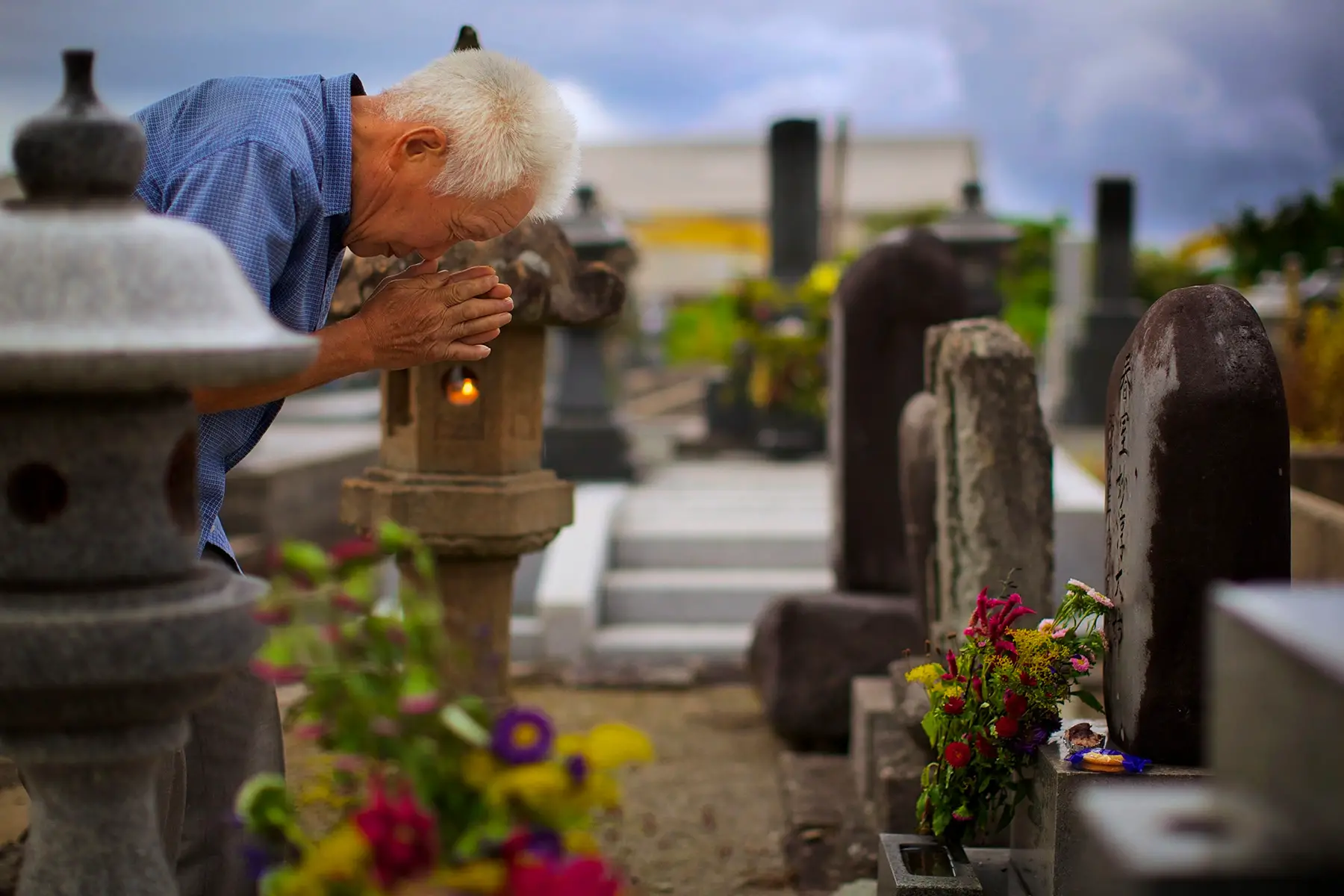
Popular ones include:
| Festival | Date | Description |
| Sapporo Snow Festival (さっぽろ雪まつり) | February | A showcase of intricate ice sculptures in Japan’s snowy north |
| Kanamara Matsuri (かなまら祭り) | early-April | A popular Shintō phallus festival in Kawasaki (川崎) City |
| Tanabata (七夕) | 7 July | The national festival of star-crossed lovers |
| Sumidagawa Fireworks Festival (隅田川花火大会) | late-July | Held almost annually in Tokyo since 1733 |
| Awa Odori (阿波踊り) | mid-August | A vibrant dance festival in Shikoku |
| Hanami (花見) | March/April | Cherry blossom viewing parties across the country |
Popular myths about Japan
- Japan is not as high-tech as its reputation suggests. Many official procedures still rely on fax machines, hand-carved stamps, and floppy disks. Taro Kono, Japan’s minister of digital reforms, recently “waged war” on this outdated technology.
- Robot waiters and hotel staff are rare, though admittedly not unheard of
- Most people don’t wear kimonos and other traditional garments on the street. They are reserved for special occasions.
- The modern Japanese diet isn’t always healthy. Many young people drink beer and eat deep-fried foods when out with friends at izakaya and other restaurants.
- Japanese people are often considered shy, but this is a generalization. If someone speaks English well, they’re likely to be more assertive in the company of a foreigner.
Useful resources
- Japan Gov – official website of the government
- National Tax Agency (NTA) – official information on taxes and income
- Ministry of Education, Culture, Sports, Science and Technology (MEXT) – official website for education
- Tokyo Expat Network – a good resource for connecting with fellow migrants
- The Japan Times, The Mainichi Shimbun, Tokyo Weekender, Metropolis – local English-language news
